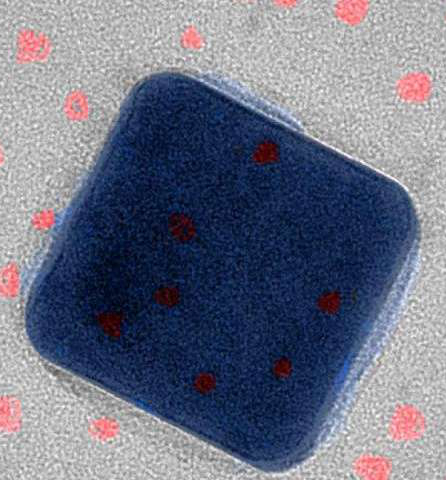90 gigahertz blink for optical computer link
 Researchers have developed a light-emitting device that can turn on and off up to 90 billion times per second.
Researchers have developed a light-emitting device that can turn on and off up to 90 billion times per second.
The device could be used to substantially increase data transmission in computers.
Currently, transistors in processor for phones, computers and other devices can flip on and off a few billion times per second, but if microchips used photons instead of electrons, they could operate a lot faster.
Lasers are able to achieve much higher rates of blinking, but they are too power-hungry to be useful in small devices.
So, researchers at Duke University are pushing semiconductor quantum dots to emit light at over 90 gigahertz.
Their ‘plasmonic’ device could be used in fully optical computer processors or for optical communication between traditional electronic microchips.
“This is something that the scientific community has wanted to do for a long time,” assistant professor of electrical computer engineering, Maiken Mikkelsen, said in an interview with science press PhysOrg.
“We can now start to think about making fast-switching devices based on this research, so there's a lot of excitement about this demonstration.”
They created the experimental device by shooting a laser onto a silver cube. This caused free electrons on the surface of the cube to oscillate together in a wave. These oscillations create light, which continues reacting with free electrons on the cube – a type of energy known as ‘plasmon’.
The team then placed a sheet of gold just 20 atoms away, trapping an energy field between the silver and gold. They then sandwiched quantum dots between the gold and silver cube, which caused the dots to produce photon emissions that could be turned on and off over 90 billion times per second.
“The eventual goal is to integrate our technology into a device that can be excited either optically or electrically,” said researcher Thang Hoang.
“That's something that I think everyone, including funding agencies, is pushing pretty hard for.”
The team says the next step will be to create a single photon source with only one quantum dot between the silver cube and the gold sheet. They are all also investigating the best possible placement and orientation of the quantum dots, to see if they can improve on the rate of blinking.








 Print
Print